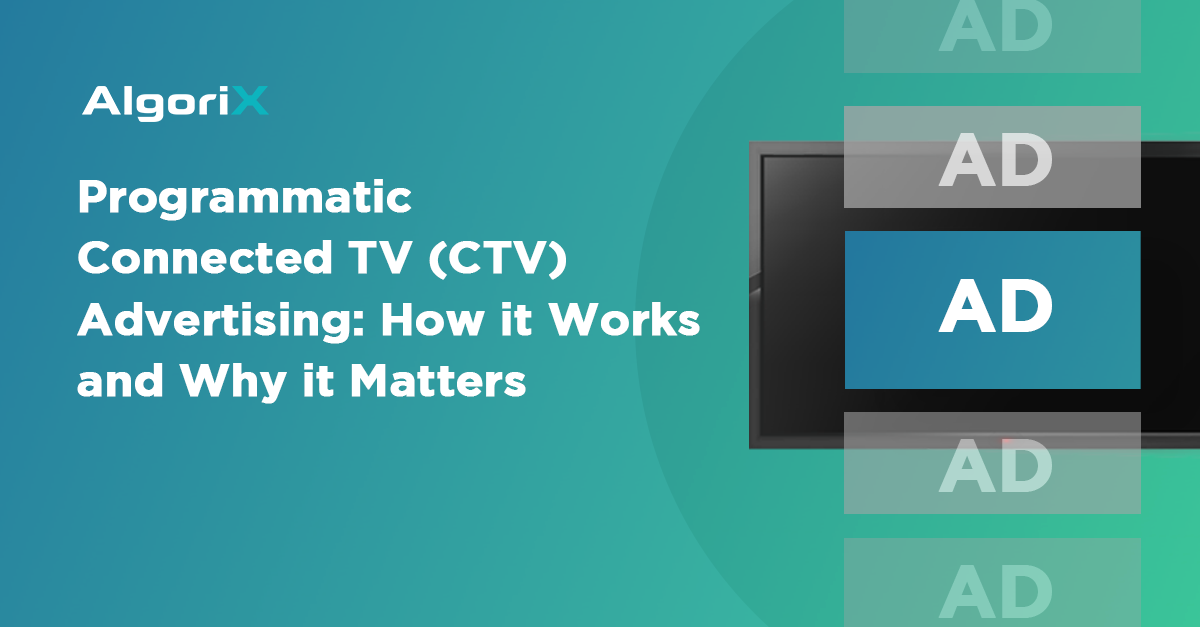Programmatic Connected TV (CTV) advertising is revolutionizing the way brands reach their target audiences. By using CTV, advertisers can access a massive range of viewers across different devices and platforms with greater precision and accuracy than ever before. This article will explain how programmatic CTV advertising works, its advantages, and why it matters to businesses today.
Programmatic CTV advertising uses sophisticated algorithms to target specific audiences based on their interests, demographics, location, and other factors. Advertisers can also use data-driven insights to optimize campaigns for maximum efficiency.
How Programmatic CTV Advertising Works
Programmatic CTV advertising refers to the automated buying and selling of CTV ad inventory. The process involves real-time bidding (RTB), allowing advertisers to bid for ad space and target specific audiences. It’s often based on various parameters, such as demographics, location, and interests.
Here’s how it works:
- Advertisers specify their campaign objectives, budget, and targeting parameters using a Demand Side Platform (DSP).
- Publishers, who own CTV ad inventory, make their inventory available through Supply Side Platforms (SSPs) connected to the DSP.
- The DSP’s algorithm automatically evaluates available inventory and places bids on behalf of the advertiser in real-time based on the targeting parameters specified.
- If the bid is successful, the ad is served to the targeted audience.
- Once the ad is served, data collection and real-time performance analysis ensue.
Programmatic advertising ecosystem for CTV includes ad exchanges like AlgoriX Exchange, demand-side platforms (DSPs), data management platforms (DMPs), and supply-side platforms (SSPs). Ad exchanges facilitate the buying and selling of ad inventory, while DSPs help advertisers to buy ad space and target their desired audiences.
DMPs collect and analyze data to help advertisers understand their audience better and deliver targeted and personalized content. SSPs help publishers to manage their ad inventory and sell it to advertisers.
Why Programmatic CTV Advertising Matters
Programmatic CTV advertising is becoming increasingly popular as a way of reaching target audiences effectively and efficiently. It gives advertisers the ability to deliver ads to specific viewers more accurately.
Programmatic CTV advertising also allows for more accurate targeting and optimization, allowing marketers to get maximum ROI from their campaigns. With programmatic CTV advertising, marketers can also gain valuable insights into their audience’s viewing habits, which helps them better understand their customers and tailor future campaigns accordingly.
Increased efficiency and automation
This revolutionary technology is helping businesses maximize their productivity while reducing operational costs. With it, organizations can automate tasks that were once manual or time-consuming and achieve greater accuracy in less time.
Targeted audience segmentation and personalization
Targeted audience segmentation allows businesses to tailor their content and messaging to specific groups of customers.
There’s a better understanding of their customer base, allowing marketers organizations to create more effective strategies. Marketers can increase customer loyalty and satisfaction while ultimately driving sales.
Real-time bidding and optimization
Real-time bidding and optimization are quickly becoming the go-to tools for digital advertisers to maximize ROI on their campaigns. With RTB, advertisers can bid and purchase media in real time, allowing them to compete more efficiently in an auction-style environment.
Optimization techniques like A/B testing allow advertisers can use data to make informed decisions about how their campaigns should be configured for maximum results.
Access to premium inventory and greater transparency
Programmatic CTV offers unprecedented access to premium inventory and greater transparency for buyers and sellers in the advertising space. Leveraging advanced algorithms allows buyers to target the right audience at scale faster than ever before.
A transparent pricing structure provides a level of clarity not seen before in programmatic buying. Buyers can confidently bid on an ad inventory with confidence that they are getting the best possible price.
Enhanced attribution and measurement
With enhanced attribution and measurement, accurate tracking and measurement are possible. This tool also allows marketers to better understand how different channels work together to drive sales, providing a more comprehensive view of the customer journey.
Best Practices for Programmatic CTV Advertising
Programmatic CTV advertising is a powerful tool for marketers to reach their target audience cost-effectively and efficiently. However, to maximize the success of your programmatic CTV campaigns, it is important to follow certain best practices.
Ensure quality and transparency of inventory sources
As businesses continue to transition to digital platforms for inventory management, ensure the quality and transparency of inventory sources. Programmatic CTV ad technology provides a platform that allows businesses to track their supply chain from source to consumer. With it, there’s assurance that all data collected is accurate and up-to-date.
Note that 74% of marketers are more willing to spend more if they can have access to transparent data.
Utilize audience data and targeting capabilities
Audience data and targeting capabilities are essential tools for marketers to reach the right people with the right message. Marketers can now take advantage of audience segmentation, personalization, and analytics. Segmentation allows 90% of brands to better understand their target audience.
Implement measures to prevent ad fraud and ensure viewability
Ad fraud is a major issue in digital advertising. It costs advertisers billions of dollars each year, and it hurts the user experience by displaying low-quality ads. To protect advertisers and users alike, it is essential to implement measures to prevent ad fraud and ensure viewability.
This can be done by implementing strict verification protocols, such as double-verification of ads and improved ad targeting & segmentation.
These measures will help reduce the amount of fraudulent activity while also increasing the quality of ads delivered to users.
Benefit from Programmatic CTV Advertising With AlgoriX
Advertising with AlgoriX‘s programmatic ad exchange is an excellent way to reach your target audience and maximize the return on your investment via CTV. Meanwhile, CTV publishers who are interested in working with us can easily integrate into our exchange via VAST Tags.
With AlgoriX, you can leverage the power of data-driven algorithms to optimize your campaigns for maximum efficiency and effectiveness. Our partnership with leading measurement leaders also ensures a clean and transparent CTV marketplace. AlgoriX also offers an intuitive dashboard that allows you to track performance metrics, such as impressions, clicks, conversions, and more.
Want to know more about programmatic CTV ads? Connect with our experts today!











